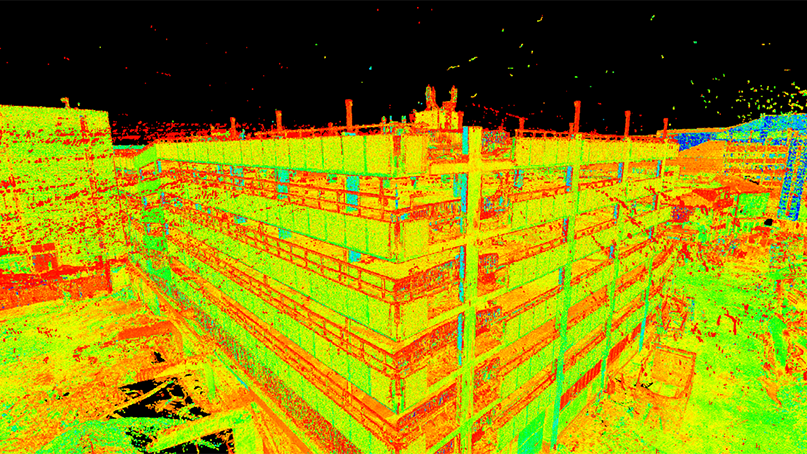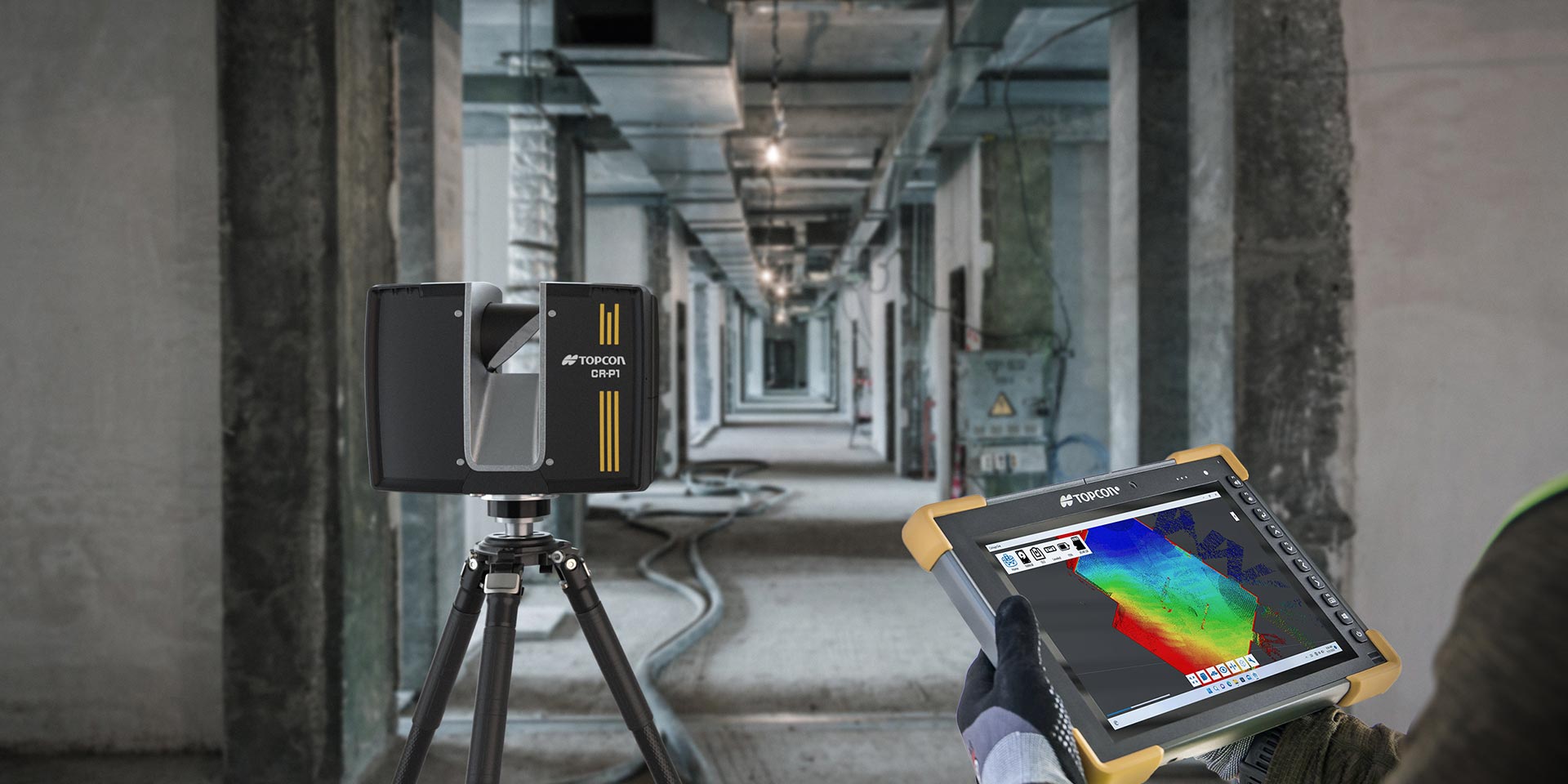Checking out the Applications of 3D Laser Scanning in Archaeology and Cultural Heritage Conservation
The integration of 3D laser scanning modern technology in archaeology and social heritage conservation marks a significant innovation in how historic websites and artefacts are recorded and assessed. This non-invasive technique supplies precise spatial data, revealing complex information that were formerly challenging to catch. As the applications of this innovation remain to evolve, different implications for education and learning, conservation, and documents emerge, inviting further exploration right into its transformative influence on the field.
Recognizing 3D Laser Scanning Modern Technology
3D laser scanning technology has actually changed the field of archaeology by giving accurate and comprehensive spatial information. This sophisticated innovation uses laser beam of lights to record countless data points from an object or website, producing a very precise three-dimensional depiction (3D Scanning). The resulting point clouds can expose complex information of archaeological websites, frameworks, and artifacts that may be unnoticeable to the naked eye
Utilizing this innovation, archaeologists can record the specific dimensions, shapes, and placements of things with extraordinary accuracy. This method decreases the threat of human mistake and gets rid of the demand for extensive hands-on dimensions. The information collected can be analyzed and shared conveniently, promoting partnership among scientists. By incorporating 3D laser scanning with GIS and other digital devices, excavators enhance their capacity to visualize and interpret historic contexts, causing deeper insights into ancient cultures and environments.
Enhancing Historical Documents
3D laser scanning considerably improves archaeological documents with its ability to create precise site maps. This innovation assists in thorough artefact evaluation, providing insights that conventional techniques might overlook. Furthermore, it ensures the conservation of contextual information, which is essential for understanding the relationships within archaeological websites.
Exact Site Mapping
While standard mapping approaches frequently battle with recording the detailed information of historical sites, advanced laser scanning modern technology supplies an advanced strategy to precise website mapping. This approach allows excavators to produce extremely detailed and specific three-dimensional representations of websites, showcasing topographical variations and structural attributes with exceptional integrity. The ability to catch countless data factors in an issue of mins enables for extensive paperwork, which can be conveniently upgraded and shared among scientists. Furthermore, laser scanning assists in the dimension of intricate geometries that would certainly be tough to examine using traditional devices. Consequently, this technology improves the accuracy of website maps, contributing considerably to the conservation and understanding of cultural heritage sources.
Thorough Artifact Evaluation
Laser scanning modern technology considerably improves the analysis of historical artefacts, giving researchers with unmatched information and precision. This method captures detailed surface textures, dimensions, and includes that typical paperwork methods might overlook. By generating high-resolution 3D models, scholars can closely analyze artifacts without the threat of damages integral in physical handling. This precision allows for much better comparative studies, enabling experts to determine production techniques, stylistic variations, and possible social significance. In addition, the ability to adjust and picture data in 3 measurements facilitates a deeper understanding of artefact capability and use. On the whole, laser scanning promotes an extra thorough method to historical paperwork, making sure that vital details about artifacts is preserved for future research study and education.
Preservation of Contextual Information
Protecting contextual information is crucial for boosting archaeological documents, as it assures that findings are recognized within their initial ecological and social structures. 3D laser scanning modern technology considerably adds to this preservation initiative by catching detailed spatial partnerships amongst artifacts, structures, and their atmospheres. By producing accurate 3D models, excavators can record the exact places and positionings of items sitting, assisting in a thorough understanding of their context. This modern technology allows scientists to take another look at and examine websites long after excavation, maintaining the stability of contextual information. Furthermore, digital records created through scanning can be shared internationally, promoting joint research and public involvement. Eventually, maintaining contextual information with 3D laser scanning enhances archaeological narratives and promotes a more profound gratitude of social heritage.
Conservation of Cultural Heritage Sites
As developments in technology proceed to progress, the preservation of cultural heritage websites has actually become increasingly dependent on innovative methods such as 3D laser scanning. This technology permits for the comprehensive paperwork of landscapes, structures, and artefacts, recording their accurate measurements and spatial relationships in a non-invasive manner. By developing high-resolution 3D designs, researchers can keep an eye on and analyze degeneration patterns, enabling aggressive conservation approaches.
Additionally, 3D laser scanning helps with the sharing of comprehensive site information with the worldwide neighborhood, promoting cooperation among chroniclers, archaeologists, and conservationists. These versions work as important resources for education and public interaction, raising awareness of social heritage problems. Furthermore, the electronic documents created can guard versus loss due to environmental factors, vandalism, or neglect. Generally, 3D laser scanning stands for a transformative approach to the preservation of social heritage, making certain that these sites can be studied and appreciated by future generations.

Remediation and Repair Efforts
The comprehensive paperwork achieved with 3D laser scanning plays a considerable role in remediation and restoration initiatives within archaeology. This innovation provides specific dimensions and high-resolution images, permitting exact digital designs of frameworks and artifacts. These models offer as essential references during restoration processes, allowing excavators to visualize the initial style and make informed choices concerning materials and techniques needed for repair these details service.
In addition, 3D laser scanning promotes the restoration of damaged or lost components by developing detailed replicas. This procedure help in ensuring that repairs this post maintain historical stability while additionally enabling for innovative strategies to restore websites. The capability to examine wear patterns and structural weaknesses through scanned information improves understanding of a website's historic context and its usage over time. As a result, 3D laser scanning not just preserves the physical aspects of social heritage yet also improves the narrative of history, leading future remediation ventures.
Educational and Research Study Opportunities
The integration of 3D laser scanning in archaeology opens significant academic and research opportunities. Academic partnerships can enhance the understanding of old websites, while specialized training workshops outfit professionals with crucial skills for utilizing this innovation. Together, these efforts cultivate a richer interaction with archaeological techniques and techniques.
Academic Collaborations in Archaeology
Collaborative efforts in archaeology have actually become significantly important for advancing both instructional and research opportunities. By fostering collaborations amongst universities, research institutions, and cultural heritage companies, these partnerships assist in the exchange of understanding and resources, enhancing the high quality of archaeological research studies. Joint tasks usually leverage varied knowledge, permitting for comprehensive analyses and innovative approaches, particularly in the application of technologies like 3D laser scanning. Such collaborations likewise advertise interdisciplinary methods, engaging fields such as conservation, background, and location scientific research. Furthermore, academic collaborations typically result in the advancement of new educational programs and training programs, preparing the future generation of excavators to successfully make use of sophisticated innovations in their job. Ultimately, these alliances add to the conservation and understanding of social heritage.
Training Workshops for Specialists
Training workshops for experts in archaeology are increasingly vital for boosting abilities in the application of sophisticated modern technologies such as 3D laser scanning. These workshops give participants with hands-on experience in making use of innovative tools and software application, fostering a much deeper understanding of data capture and evaluation procedures. Specialists can learn to create accurate electronic models of historical sites, which significantly help in documentation and conservation initiatives. Furthermore, these training sessions frequently consist of discussions on best techniques and study, advertising expertise exchange among individuals. By purchasing continuous education and learning, experts can stay updated on evolving technologies, ultimately boosting the performance of their research and social heritage conservation efforts. This dedication to ability enhancement is essential for progressing the field of archaeology.
Future Patterns in 3D Laser Scanning for Archaeology
As developments in modern technology remain to improve different areas, the future of 3D laser scanning in archaeology guarantees to enhance both the precision and effectiveness of site paperwork and analysis. Emerging fads show an expanding combination of expert system and artificial intelligence, facilitating automated information processing and analysis. This development will certainly enable archaeologists to analyze More hints complex datasets a lot more quickly, bring about faster understandings into historical contexts.
The integration of drone technology with 3D laser scanning is likely to increase, enabling comprehensive airborne studies of historical websites that are hard to gain access to. The increasing affordability of scanning devices will certainly democratize access, encouraging smaller organizations and independent researchers to utilize these tools successfully. Furthermore, advancements in digital fact and augmented fact will enable immersive experiences for public involvement and education, making historical findings a lot more accessible and interactive. These trends jointly indicate a transformative future for archaeology, enhancing preservation efforts and broadening the technique's outreach.
Often Asked Inquiries
Exactly How Much Does 3D Laser Scanning Tools Cost?

What Are the Limitations of 3D Laser Scanning?
The restrictions of 3D laser scanning consist of high prices, prospective information processing difficulties, level of sensitivity to ecological conditions, and trouble recording detailed details in intricate surface areas, which can impact the accuracy and efficiency of checked depictions. (3D Scanning)

Can 3D Laser Scanning Be Made Use Of Undersea?
Yes, 3D laser scanning can be used undersea, yet it needs specific devices and techniques to conquer difficulties such as water distortion and restricted exposure. Successful applications have been demonstrated in marine archaeology and underwater studies.
For how long Does a Scanning Project Generally Take?
A scanning job typically takes anywhere from a few days to numerous weeks, relying on the complexity and size of the area being checked, in addition to the preparation and post-processing needs entailed in the project.
Exist Specific Software Program Needs for Handling 3D Checks?
Yes, certain software application demands for processing 3D scans consist of programs efficient in handling large factor clouds, such as Autodesk Wrap-up, Cyclone, or MeshLab. These tools help with analysis, visualization, and assimilation into numerous applications effectively.
The combination of 3D laser scanning technology in archaeology and social heritage conservation notes a considerable development in how historical websites and artefacts are recorded and assessed. 3D laser scanning technology has actually transformed the area of archaeology by giving comprehensive and exact spatial information. As advancements in modern technology continue to develop, the preservation of social heritage websites has come to be significantly reliant on cutting-edge techniques such as 3D laser scanning. As developments in technology proceed to reshape numerous areas, the future of 3D laser scanning in archaeology promises to improve both the precision and performance of website paperwork and evaluation. The assimilation of drone modern technology with 3D laser scanning is likely to expand, enabling complete aerial studies of archaeological sites that are hard to gain access to.